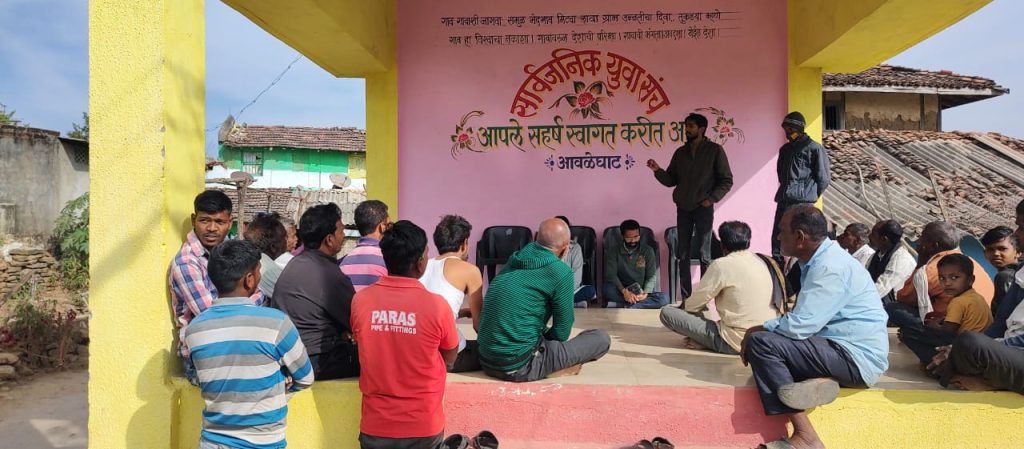Mandar Pingle, Assistant Director, Satpuda Foundation speaks to us about how he got inspired to protect the forests of central India and what he loves most about his job
1.Tell us more about yourself and what got you interested in working for the environment.
I was born and brought up in Nagpur city which is surrounded by several forests and tiger reserves. My grandfather too had always lived in remote places due to his job in the railways, so he used to tell us about the different wildlife species he came across. Also, I remember, during our holidays, our family preferred traveling to less explored places that are close to nature.
During one such trip, I had the opportunity of staying with interacting with the local tribal community of Patalkot valley. They were living humbly in harmony with nature with limited modern facilities. We got to experience how strong their connection with nature is and this really left an impression on me.
Due to an amalgamation of these and many other experiences during my childhood, my interest in nature and wildlife kept growing and the thought of doing something for its conservation got instilled in me. Eventually, after my graduation, I started looking out for opportunities of working in this space. I finally got an opportunity of working with Satpuda Foundation and that too in Pench Tiger Reserve which I had been visiting since childhood!
2. How does a typical day unfold for you / Tell us a bit about your daily tasks and conservation work
At Satpuda foundation, our work revolves around communities living around tiger reserves in India. We focus on involving them in conservation and reducing anthropogenic pressures on the surrounding forests. For this, we undertake initiatives like medical camps to build trust with the community. We offer sustainable livelihood training and undertake conservation awareness programs.
On a typical day when we deliver medical camps, we cover 2 villages per day and interact with the patients. Along with the medical problems, they also share wildlife conflict challenges with us and we discuss possible solutions with them. Through the camps, we are also able to advise the youth about sustainable livelihood opportunities and training programs offered by the government.

Mandar helping the doctor to attend a patient during a medical camp
Because of the support provided to them, the youth are then motivated to support us in conservation actions like fighting forest fires, cleaning water holes, and preparing check dams. Through medical camps, we are also able to reach women community members. Our aim is to empower them to start micro-enterprises for which we help create self-help groups, and provide them training and guidance.
Basically, we are able to collect information about the community needs and conservation gaps through our informal interactions with the community during medical camps. Followed by this, we provide them with solutions, connect them with various state welfare schemes and conduct dedicated conservation awareness programs.
Furthermore, we also interact with the forest department staff on a regular basis and try to be the connecting link between the local community and the forest department.
3. What do you love about your current job
Having spent my early years in the city, I really like the peace and calm of nature which help me streamline my thoughts better. Here, when we work amidst nature, we don’t feel tired even after a long day of work. Each day, we get to learn something from nature which can be used to enhance our personal lives too, and we are not chasing only materialistic needs.
4. Could you share a key learning or experience from the field
When we speak about the community, the topic which always comes up is coexistence and tolerance levels towards wildlife. What I have experienced is that even in today’s day and age, we come across a few individuals from the community who feel that they are an integral part of nature and that the environment should be protected. Their way of living life and celebrating festivals, all are an indication of how connected they still feel with nature. So there is a lot that we learn from such individuals.

Mandar interacting with the local community
Secondly, especially among urban residents, the general outlook about wild animals is that they are very aggressive and they attack humans at first sight. But this is not true. Wildlife has emotions too with distinct personalities. If one observes closely, nature has an answer to all our questions.
5. Do you feel optimistic about the future of the natural environment of India/ Have you experienced a positive change regarding conservation in your area
I’ve been working in this region for the past 6 years now and there certainly has been some change. Earlier the community was totally dependent on the forest for resources due to the lack of initiatives and schemes. As the socio-economic conditions of the community improve we can observe a change in the outlook of the community. Scientifically speaking, in the Pench region, forest cover and water resource utilization have improved too. Poaching too has reduced, with the community wanting a better life. The forest staff too, has access to more resources now which helps them with law enforcement.
Also, we can see many individuals from the younger generation working in wildlife conservation today. There is an opportunity to network with them and share knowledge. The combination of knowledge of the senior generation, the energy and enthusiasm of the younger generation and the support from the community that we are currently seeing make me optimistic about the future.

